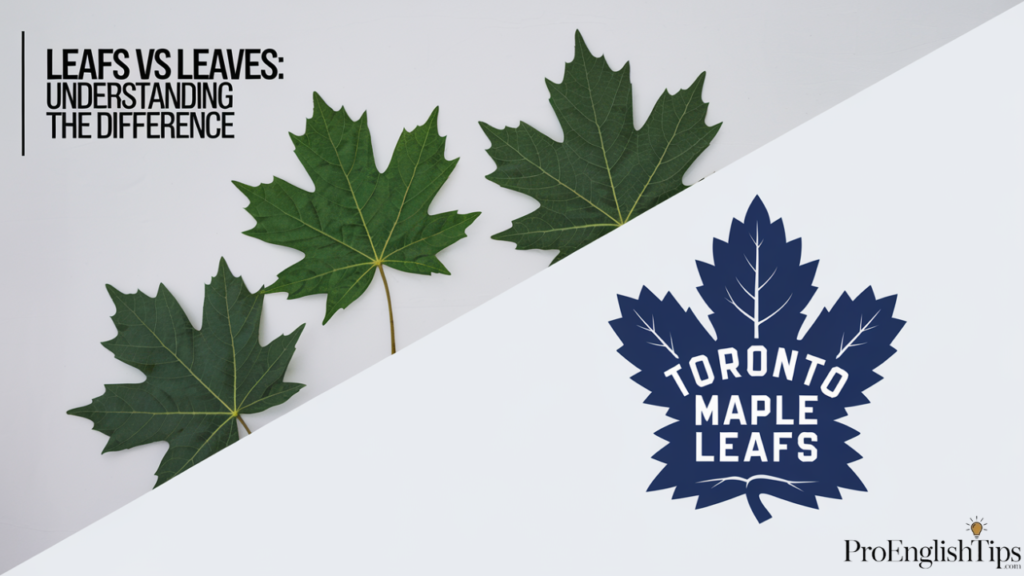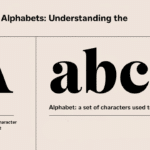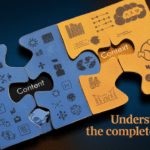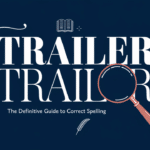The English language often presents interesting challenges when it comes to plural formation and word choice. One such puzzling case is the debate between “leafs” and “leaves” as the plural form of “leaf.” This comprehensive writing guide will help you navigate the complexities of this common grammar question.
The Basic Rule
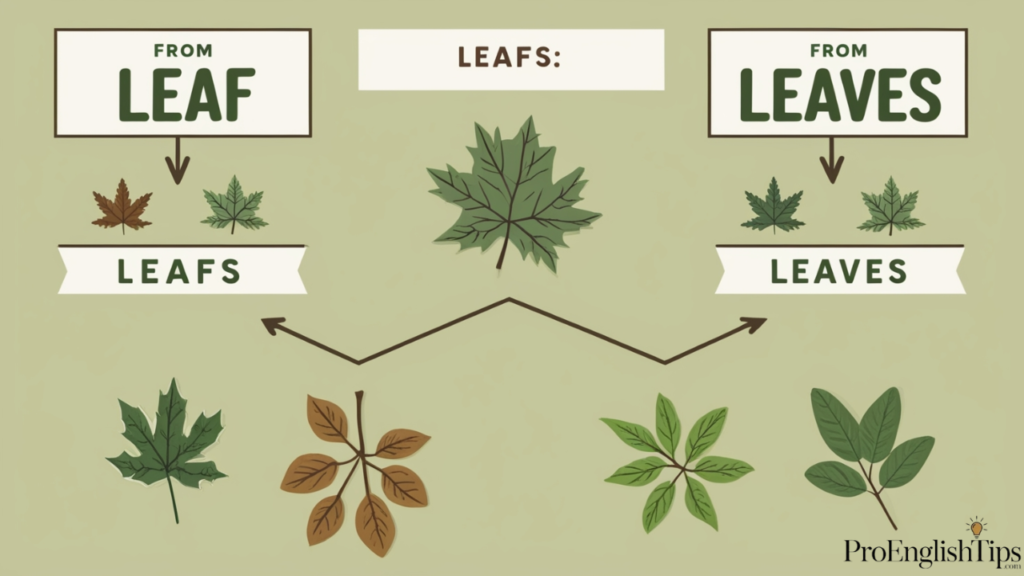
In English, the standard plural rules dictate that most nouns form their plurals by adding “-s” or “-es” to the singular form. However, some words follow different patterns, creating what we call irregular plural forms. The word “leaf” falls into this category of linguistic exceptions.
Here’s a comprehensive reference of irregular plural forms similar to leaf/leaves:
| Singular Form | Regular Plural | Irregular Plural | Usage Context |
|---|---|---|---|
| leaf | leafs | leaves | botanical terms |
| thief | thiefs | thieves | criminal context |
| knife | knifes | knives | cutlery |
| life | lifes | lives | existence |
| shelf | shelfs | shelves | furniture |
| wolf | wolfs | wolves | animals |
| half | halfs | halves | mathematics |
| self | selfs | selves | psychology |
| loaf | loafs | loaves | baking |
| calf | calfs | calves | animals |
Understanding Contextual Usage
The choice between “leafs” and “leaves” depends heavily on contextual usage. In most cases, “leaves” is the correct plural form when referring to plant foliage or natural elements. However, there are specific situations where “leafs” might be the appropriate choice.
Sports Terminology and Proper Nouns

One of the most notable exceptions to the standard grammar rules involves the Toronto Maple Leafs. This usage demonstrates how proper noun rules can override standard grammar patterns. The team’s name showcases an important principle in language usage: brand names and proper nouns often follow their own rules.
Here’s a table showing various sports teams and their unique plural formations:
| Team Name | Standard Plural | Actual Usage | Reason |
|---|---|---|---|
| Toronto Maple Leafs | Maple Leaves | Maple Leafs | proper noun |
| Minnesota Wild | Wilds | Wild | brand choice |
| Miami Heat | Heats | Heat | team name |
| Orlando Magic | Magics | Magic | stylistic |
| Utah Jazz | Jazzes | Jazz | historical |
| Tampa Bay Lightning | Lightnings | Lightning | brand name |
| Colorado Avalanche | Avalanches | Avalanche | team choice |
| Seattle Kraken | Krakens | Kraken | mythological |
| Dallas Stars | Stars | Stars | regular plural |
| Boston Bruins | Bruins | Bruins | regular plural |
Botanical and Scientific Context
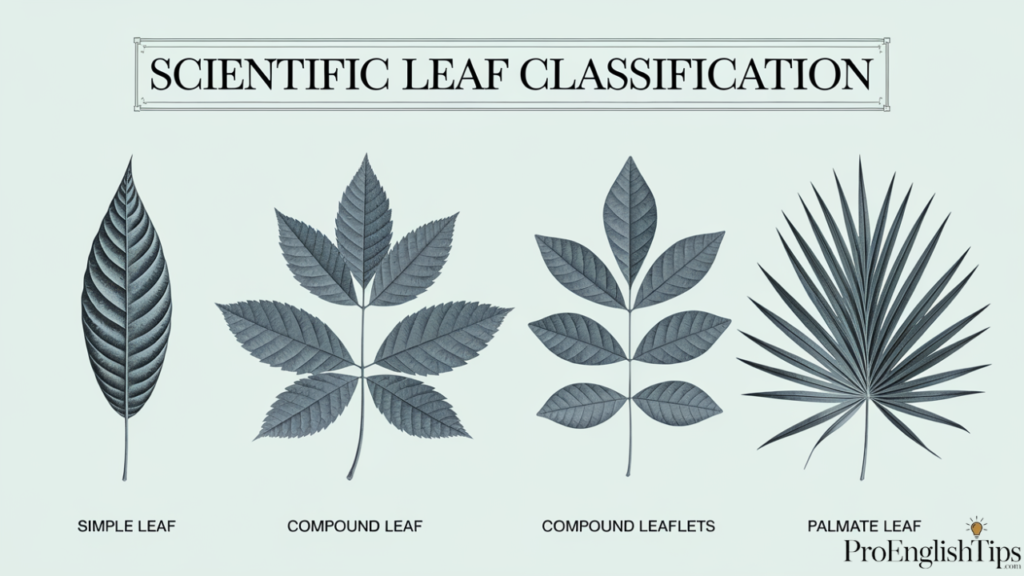
In botanical terminology and scientific terminology, the correct plural form is almost always “leaves.” This applies to nature writing and technical writing contexts where precision matters.
Consider this reference table for botanical vocabulary:
| Plant Part | Singular Form | Plural Form | Scientific Usage |
|---|---|---|---|
| leaf | leaf | leaves | photosynthetic organ |
| stem | stem | stems | support structure |
| root | root | roots | nutrient absorption |
| flower | flower | flowers | reproductive organ |
| sepal | sepal | sepals | protective structure |
| petal | petal | petals | attractive structure |
| stamen | stamen | stamens | male structure |
| pistil | pistil | pistils | female structure |
| branch | branch | branches | woody extension |
| node | node | nodes | stem junction |
Professional Writing Applications
In professional writing, understanding the correct usage of “leafs” versus “leaves” becomes crucial for maintaining communication accuracy. This knowledge particularly matters in various professional contexts.
Email and Business Communication
Here’s an example email showcasing proper usage in a professional context:
To: sarah.johnson@botanicalgardens.com From: michael.chen@research.edu Subject: Autumn Leaves Study Results
Dear Dr. Johnson,
Our recent study of autumn leaves has yielded fascinating results regarding color changes in maple and oak specimens. The plant description data shows significant variations in pigment development…
Technical Documentation
Consider this table of common uses in technical writing:
| Document Type | Correct Form | Example Usage | Field |
|---|---|---|---|
| Research Paper | leaves | deciduous leaves | botany |
| Technical Manual | leaves | inspect leaves | maintenance |
| Field Guide | leaves | compound leaves | biology |
| Lab Report | leaves | damaged leaves | research |
| Patent Document | leaves | artificial leaves | engineering |
| Medical Text | leaves | medicinal leaves | medicine |
| Agricultural Guide | leaves | crop leaves | farming |
| Environmental Report | leaves | fallen leaves | ecology |
| Product Description | leaves | tea leaves | commerce |
| Safety Manual | leaves | poisonous leaves | safety |
Common Mistakes and Solutions
Understanding common mistakes in the usage of these terms helps maintain language clarity. The confusion often stems from the complexity of English morphological variation and semantic distinction.
Here’s a reference table of common scenarios and their correct forms:
| Context | Incorrect Usage | Correct Usage | Explanation |
|---|---|---|---|
| General Writing | The leafs fell | The leaves fell | natural plural |
| Team Reference | Maple Leaves | Maple Leafs | proper noun |
| Scientific Paper | The leafs change color | The leaves change color | botanical term |
| Garden Guide | Remove dead leafs | Remove dead leaves | plant care |
| Recipe | Tea leafs | Tea leaves | culinary term |
| Literature | Golden leafs | Golden leaves | descriptive |
| Technical Manual | Fan leafs | Fan leaves | mechanical |
| Medical Text | Aloe leafs | Aloe leaves | medicinal |
| Poetry | Autumn leafs | Autumn leaves | artistic |
| Field Notes | Sample leafs | Sample leaves | scientific |
Seasonal and Literary Applications
The use of “leaves” becomes particularly relevant in seasonal terminology and literary usage. Writers often employ this term when describing natural description scenarios or creating evocative environmental terms.
Digital and Technical Applications
In modern contexts, understanding these usage patterns becomes crucial for content creation, SEO, and technical documentation. This includes proper implementation in various digital formats and platforms.
Here’s a reference for digital content usage:
| Platform Type | Common Usage | Style Guide | Purpose |
|---|---|---|---|
| Blog Post | leaves | natural | engagement |
| SEO Content | both forms | varied | optimization |
| Technical Docs | leaves | precise | instruction |
| Social Media | context-dependent | flexible | communication |
| Academic | leaves | formal | education |
| Marketing | both forms | strategic | promotion |
| News Article | context-based | journalistic | information |
| Website Copy | leaves | consistent | clarity |
| App Interface | leaves | user-friendly | navigation |
| API Documentation | leaves | technical | reference |
Special Cases and Exceptions
While language rules generally favor “leaves,” understanding exceptions helps maintain accuracy in specific contexts. This knowledge is particularly valuable for writers working across different genres and styles.
Conclusion and Best Practices
Understanding the difference between “leafs” and “leaves” requires attention to context and purpose. This spelling guide serves as a comprehensive reference for writers, editors, and content creators seeking to maintain high writing standards and language conventions.
Remember that while grammar guidelines provide structure, exceptions exist, particularly in cases of proper nouns and specialized terminology. The key is understanding the context and purpose of your writing to make informed choices about usage.
This guide helps navigate these choices while maintaining both accuracy and style in your writing. Whether you’re engaged in casual writing or formal documentation, understanding these distinctions will enhance your communication effectiveness.
Teaching and Educational Context
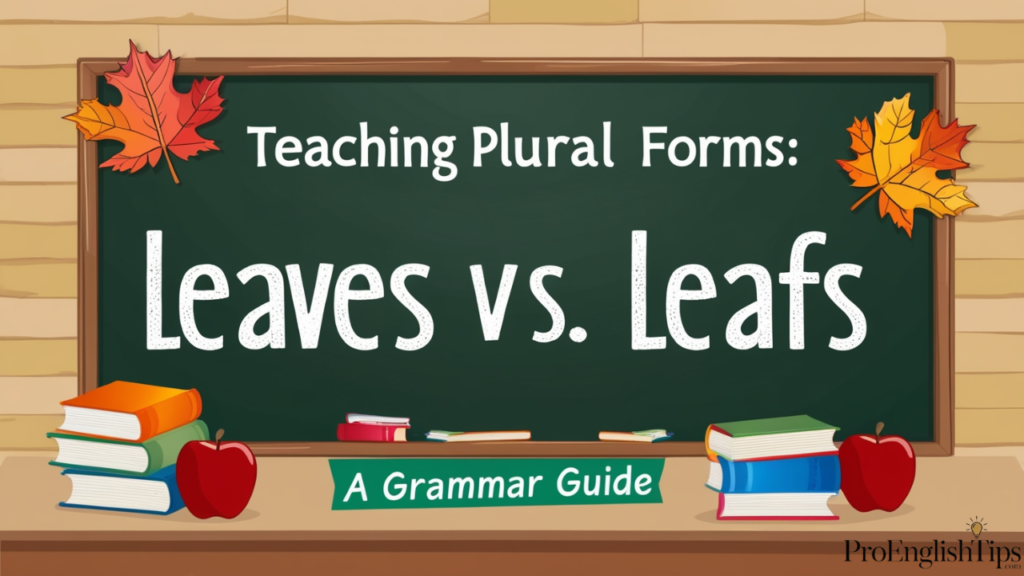
In educational settings, understanding the distinction between “leafs” and “leaves” forms part of essential language rules. Teachers often encounter questions about this plural formation when introducing irregular plural concepts.
Classroom Applications
Consider this example of a teacher’s email to parents about an upcoming nature study project:
To: parents@elementary.edu From: ms.anderson@elementary.edu Subject: Fall Nature Study Project
Dear Parents,
Our third-grade class will begin collecting autumn leaves next week for our science project. Students will learn about plant description and classification while developing their nature vocabulary…
Here’s a comprehensive reference table for teaching purposes:
| Grade Level | Teaching Focus | Example Activities | Learning Outcomes |
|---|---|---|---|
| Kindergarten | Basic Recognition | Leaf Collection | Nature Awareness |
| First Grade | Simple Plurals | Sorting Games | Basic Grammar |
| Second Grade | Irregular Plurals | Nature Journals | Pattern Recognition |
| Third Grade | Scientific Terms | Leaf Classification | Vocabulary Building |
| Fourth Grade | Proper Nouns | Sports Writing | Context Understanding |
| Fifth Grade | Technical Writing | Research Projects | Scientific Literacy |
| Middle School | Literary Usage | Creative Writing | Style Development |
| High School | Advanced Grammar | Technical Reports | Professional Writing |
| ESL Basic | Simple Forms | Picture Matching | Basic Communication |
| ESL Advanced | Complex Usage | Content Creation | Fluency Development |
Publishing and Editorial Standards
Professional editors must maintain consistent writing standards when dealing with these terms. The choice between “leafs” and “leaves” often depends on the publication’s style guide and the specific contextual usage.
Style Guide Variations
Different style guides may have specific requirements for handling botanical terminology and sports terminology. Here’s a reference table showing various style guide approaches:
| Style Guide | General Rule | Sports Usage | Scientific Usage |
|---|---|---|---|
| AP Style | leaves | Maple Leafs | leaves |
| Chicago Manual | leaves | Maple Leafs | leaves |
| MLA Style | leaves | Maple Leafs | leaves |
| APA Style | leaves | Maple Leafs | leaves |
| Scientific | leaves | not applicable | leaves |
| Botanical | leaves | not applicable | leaves |
| Sports Writing | context-based | team names | not applicable |
| Technical Writing | leaves | proper nouns | leaves |
| Web Content | leaves | proper nouns | leaves |
| Academic | leaves | citation-based | leaves |
Digital Content Creation
Modern content creators must understand both traditional grammar patterns and digital-specific requirements. This knowledge affects everything from SEO optimization to technical documentation.
Social Media Considerations
The character limits and informal nature of social media platforms can influence word forms and usage patterns. However, maintaining correct usage remains important for professional accounts.
Here’s a guide to platform-specific usage:
| Platform | Character Limit | Recommended Usage | Content Type |
|---|---|---|---|
| 280 | Context-Based | Short Updates | |
| 3000 | Professional | Business Posts | |
| 2200 | Creative | Visual Content | |
| 63206 | Flexible | Mixed Content | |
| 500 | Descriptive | Visual Pins | |
| YouTube | 5000 | Informative | Video Description |
| Medium | Unlimited | Professional | Long-form Content |
| 40000 | Community-Based | Discussion Posts | |
| TikTok | 2200 | Casual | Short Video Text |
| Blog Posts | Unlimited | SEO-Optimized | Article Content |
Scientific and Research Applications
In scientific terminology, precision in language usage becomes crucial. Researchers must maintain consistent use of “leaves” when discussing plant foliage and other natural elements.
Research Documentation
Scientific papers and research documents require strict adherence to proper terminology. Here’s an example from a botanical research paper:
“The study examined the correlation between leaf surface area and photosynthetic efficiency. Results showed that larger leaves demonstrated increased capacity for light absorption…”
Here’s a reference table for scientific writing contexts:
| Research Field | Standard Term | Usage Example | Documentation Type |
|---|---|---|---|
| Botany | leaves | deciduous leaves | Research Papers |
| Ecology | leaves | canopy leaves | Field Studies |
| Agriculture | leaves | crop leaves | Yield Reports |
| Forestry | leaves | forest leaves | Survey Data |
| Horticulture | leaves | garden leaves | Care Guides |
| Plant Biology | leaves | cellular study | Lab Reports |
| Herbology | leaves | medicinal leaves | Medical Studies |
| Environmental | leaves | biomass study | Impact Reports |
| Paleobotany | leaves | fossil leaves | Historical Data |
| Genetics | leaves | gene expression | Research Data |
Modern Language Evolution
Language evolves, and understanding both traditional grammar rules and modern usage patterns helps maintain effective communication. This evolution affects how we approach both casual writing and professional writing.
Digital Age Adaptations
The digital age brings new challenges in maintaining proper language conventions while adapting to modern communication needs. Writers must balance traditional rules with contemporary usage requirements.
This comprehensive guide serves as a reference for anyone seeking to navigate the complexities of English plural rules and word choice. Whether writing for academic, professional, or casual purposes, understanding these distinctions helps maintain clear and effective communication.
Remember that while exceptions exist, particularly in cases of proper nouns like the Toronto Maple Leafs, standard usage generally follows established grammar patterns. The key is understanding your context and audience to make appropriate choices in your writing.
International English Variations
The debate between “leafs” and “leaves” extends across different varieties of English, though the language rules remain largely consistent. Understanding these variations helps maintain proper language usage across international contexts.
Regional Differences
While the basic grammar rules remain the same, subtle differences may appear in how different English-speaking regions approach certain proper nouns and specialized terminology.
Here’s a comprehensive look at international usage patterns:
| Region | Standard Usage | Sports Usage | Local Variations |
|---|---|---|---|
| British English | leaves | context-based | strictly leaves |
| American English | leaves | team names | some flexibility |
| Canadian English | leaves | Maple Leafs | team influence |
| Australian English | leaves | sports-based | nature focus |
| Indian English | leaves | botanical | formal usage |
| South African English | leaves | nature terms | wildlife context |
| New Zealand English | leaves | rugby terms | native plants |
| Irish English | leaves | traditional | nature terms |
| Scottish English | leaves | sports teams | local terms |
| Singapore English | leaves | formal use | mixed influence |
Media and Entertainment Usage
Understanding how these terms appear in various media helps writers maintain appropriate word choice in different contexts. This includes everything from sports writing to entertainment content.
Broadcasting Guidelines
Sports broadcasters and media professionals must navigate the complex terrain of proper usage, especially when covering teams like the Toronto Maple Leafs while also discussing natural elements in other contexts.
Consider this reference table for media usage:
| Media Type | Common Usage | Style Requirements | Special Cases |
|---|---|---|---|
| Sports News | team names | brand consistency | proper nouns |
| Nature Shows | leaves | botanical accuracy | scientific terms |
| Weather Reports | leaves | seasonal terms | forecasting |
| Entertainment | context-based | creative license | artistic use |
| Documentary | leaves | factual accuracy | educational |
| News Reports | standard rules | AP style | formal usage |
| Radio Scripts | pronunciation | clear context | audience focus |
| TV Captions | standard form | brief clarity | visual match |
| Live Commentary | context-based | immediate clarity | dynamic use |
| Podcast Scripts | conversational | natural flow | mixed format |
Digital Gaming and Virtual Worlds
Modern gaming and virtual environments present unique challenges in representing botanical terms and natural description. Here’s how different digital contexts handle these terms:
| Game Genre | Usage Pattern | Visual Elements | Player Interaction |
|---|---|---|---|
| Nature Sims | leaves | realistic | collectible |
| Sports Games | team names | branding | authentic |
| RPG Games | botanical | fantasy | interactive |
| Educational | scientific | accurate | learning |
| Mobile Games | simplified | iconic | casual |
| VR Nature | immersive | detailed | explorable |
| AR Plants | real-world | overlaid | informative |
| Strategy Games | resource-based | symbolic | functional |
| Adventure | environmental | atmospheric | discoverable |
| Building Sims | decorative | customizable | placeable |
Translation and Localization
The challenge of maintaining proper usage patterns extends to translation and localization efforts. Understanding how different languages handle plural forms helps in maintaining accuracy across languages.
Cross-Language Considerations
Translators must consider both linguistic exceptions and cultural contexts when handling terms related to plant foliage and sports team names.
Here’s a reference guide for translators:
| Language | Plural Form | Sports Terms | Nature Terms |
|---|---|---|---|
| Spanish | hojas | proper names | botanical |
| French | feuilles | team context | natural |
| German | Blätter | sport specific | scientific |
| Italian | foglie | team names | flora terms |
| Japanese | 葉 | katakana use | natural terms |
| Chinese | 叶子 | translated | botanical |
| Russian | листья | team usage | nature words |
| Portuguese | folhas | sports context | plant terms |
| Korean | 잎 | sports names | natural |
| Arabic | أوراق | team context | botanical |
Future Language Trends
As language continues to evolve, understanding both traditional grammar patterns and emerging usage trends becomes increasingly important. This includes adaptation to new digital formats and communication styles.
Emerging Communication Patterns
Modern communication platforms continue to influence how we use and understand language, including traditional grammar rules and plural rules. This evolution affects both casual writing and professional writing.
The key to maintaining effective communication lies in understanding when to apply standard plural formation rules and when to acknowledge exceptions. This knowledge helps writers navigate both traditional and emerging communication contexts while maintaining clarity and accuracy.
From botanical terminology to sports writing, from scientific papers to social media posts, the proper use of “leafs” versus “leaves” reflects a deeper understanding of English language nuances. This comprehension enhances both writing standards and communication accuracy across all contexts.
The evolution of language usage in digital spaces, combined with traditional rules and exceptions, creates a rich tapestry of language conventions that continues to develop. Understanding these patterns helps writers maintain both accuracy and effectiveness in their communication.
Remember that while rules provide structure, context remains key in determining proper usage. Whether dealing with natural elements or proper nouns, success lies in understanding your audience and purpose while maintaining appropriate language clarity.
Practical Templates and Examples
Understanding language usage in real-world scenarios helps reinforce proper application of grammar rules. Let’s explore practical templates for various professional contexts.
Professional Email Templates
Here’s a practical example of how a botanist might write about plant foliage:
To: research.team@botanicalstudy.org From: dr.martinez@research.edu Subject: Spring Leaf Analysis Protocol
Dear Research Team,
Following our latest study of deciduous leaves, I’ve updated our collection protocol. The new guidelines ensure proper handling of both young and mature leaf specimens while maintaining consistent botanical terminology…
Technical Documentation Examples
When writing technical documents about natural elements, clarity and precision become crucial. Here’s a sample specification document:
Product Specification: Artificial Plant Manufacturing Document ID: APM-2024-001 Section: Leaf Design Parameters
The artificial leaves must conform to the following parameters for realistic plant description. Each leaf component requires specific attention to surface texture and color gradients…
Quick Reference Applications
Consider this practical guide for common writing scenarios:
| Writing Context | Example Sentence | Notes |
|---|---|---|
| Journalism | The autumn leaves created a golden carpet. | descriptive style |
| Technical | The leaves exhibited chlorosis. | scientific accuracy |
| Marketing | Our Tea Leaves Collection launches today. | product naming |
| Sports | The Toronto Maple Leafs won tonight. | team name |
| Academic | The leaves display cuneate bases. | botanical terms |
| Creative | Golden leaves danced in the wind. | literary style |
| Business | Tea leaves futures rose 3%. | market terms |
| Education | The leaves change color in fall. | simple facts |
| Social Media | Fall leaves photo challenge! | casual tone |
| Medical | These leaves contain compounds… | clinical terms |
Industry-Specific Applications
Different industries require specific approaches to word choice and plural form usage:
| Industry | Standard Template | Example Usage |
|---|---|---|
| Publishing | Style Guide Entry | “Use ‘leaves’ for botanical references.” |
| Marketing | Product Description | “Premium tea leaves sourced from…” |
| Education | Lesson Plan | “Students will collect leaves for…” |
| Science | Lab Protocol | “Measure leaves at specified intervals…” |
| Journalism | Style Sheet | “Sports team: Maple Leafs; Plants: leaves” |
| Legal | Contract Language | “Including all leaves and derivatives…” |
| Medicine | Clinical Notes | “Patient ingested toxic leaves…” |
| Agriculture | Field Reports | “Crop leaves showing signs of…” |
| Technology | User Manual | “Clean leaves from air intake…” |
| Conservation | Survey Forms | “Count damaged leaves per branch…” |
Format-Specific Guidelines
Different communication formats require specific approaches to maintain proper language conventions:
| Format Type | Best Practice | Template Example |
|---|---|---|
| Blog Posts | SEO-Friendly | “Why Do Leaves Change Color?” |
| White Papers | Technical | “Leaf Morphology Analysis” |
| Press Releases | News Style | “Maple Leafs Announce…” |
| Social Posts | Engaging | “🍁 Fall leaves are here!” |
| Video Scripts | Conversational | “Notice how the leaves…” |
| Podcasts | Natural Flow | “Let’s talk about leaves…” |
| Newsletters | Mixed Style | “From leaves to Leafs…” |
| Reports | Formal | “Leaf count indicates…” |
| Presentations | Concise | “Leaf Analysis Results” |
| User Guides | Clear | “Remove dead leaves…” |
Common Correction Templates
For editors and proofreaders, here’s a quick reference for common corrections:
| Original Text | Correction | Explanation |
|---|---|---|
| The leafs fell | The leaves fell | natural plural |
| Tea leafs | Tea leaves | standard usage |
| The Maple Leaves | The Maple Leafs | team name |
| Autumn leafs | Autumn leaves | seasonal term |
| Plant leafs | Plant leaves | botanical |
| The leafs grew | The leaves grew | natural growth |
| Falling leafs | Falling leaves | movement |
| Green leafs | Green leaves | description |
| Tree leafs | Tree leaves | nature term |
| Chemical leafs | Chemical leaves | scientific |
These practical applications help bridge the gap between theoretical understanding and real-world usage of grammar patterns and linguistic exceptions. Whether writing about natural description or sports terminology, these templates provide reliable guidance for maintaining proper language clarity.
Remember that while writing standards provide structure, adaptability to specific contexts ensures effective communication. This practical supplement serves as a quick reference for implementing proper usage across various professional and creative contexts.
Specialized Writing Contexts
Understanding advanced applications of language rules becomes crucial in specialized writing scenarios. These contexts often require careful attention to both grammar patterns and industry-specific terminology.
Legal Documentation
Legal documents require precise language usage when referring to both natural elements and organizational names. Here’s an example from a property law document:
“The property rights extend to all trees and their leaves, excluding manufactured items bearing the Toronto Maple Leafs® trademark…”
Here’s a comprehensive guide for legal writing contexts:
| Document Type | Standard Usage | Special Considerations | Legal Impact |
|---|---|---|---|
| Contracts | leaves | trademark protection | binding terms |
| Patents | leaves | technical precision | claim scope |
| Trademarks | case-specific | brand protection | legal rights |
| Property Law | leaves | natural assets | ownership |
| Environmental | leaves | resource definition | regulation |
| Corporate Law | context-based | entity names | compliance |
| Insurance | leaves | damage assessment | coverage |
| Litigation | precise usage | evidence description | case basis |
| Regulations | standardized | legal definitions | enforcement |
| Agreements | specific terms | party definitions | obligations |
Advanced Technical Applications
In highly technical contexts, proper word forms and morphological variation can significantly impact meaning and interpretation.
Scientific Research Protocols
Consider this advanced research protocol structure:
| Protocol Step | Terminology | Measurement Criteria | Documentation |
|---|---|---|---|
| Sample Collection | leaves | mass per unit | raw data |
| Morphology Study | leaf structure | microscopic | imaging |
| Chemical Analysis | leaf content | molecular | results |
| Genetic Testing | leaf tissue | DNA markers | sequence data |
| Statistical Analysis | leaf patterns | variance | calculations |
| Environmental Impact | leaf health | indicators | assessments |
| Growth Studies | leaf development | time series | progression |
| Stress Response | leaf adaptation | changes | observations |
| Comparative Analysis | leaf variations | differences | comparisons |
| Long-term Studies | leaf cycles | seasonal | tracking |
Computational Applications
Modern language usage extends to computational contexts, where precise terminology affects database design and API structure:
| Data Structure | Field Name | Value Type | Usage Context |
|---|---|---|---|
| Database | leaf_count | integer | quantity tracking |
| API Endpoint | leaves_status | string | condition monitoring |
| Object Property | leafType | enum | classification |
| Variable Name | leafArray | array | data collection |
| Function Name | processLeaves | method | data processing |
| Class Name | LeafAnalyzer | class | analysis tool |
| Parameter | leafId | unique id | identification |
| Collection | leafSet | set | unique elements |
| Document | leafDoc | document | storage |
| Schema | leafSchema | schema | validation |
Cultural and Literary Contexts
Understanding semantic distinction in cultural and literary contexts requires attention to both traditional grammar rules and creative expression.
Literary Analysis Framework
| Literary Device | Usage Example | Symbolic Meaning | Context |
|---|---|---|---|
| Metaphor | dancing leaves | freedom | poetry |
| Symbolism | falling leaves | change | prose |
| Personification | whispering leaves | nature’s voice | narrative |
| Imagery | golden leaves | autumn beauty | description |
| Allegory | last leaf | hope | storytelling |
| Motif | scattered leaves | disorder | themes |
| Foreshadowing | withering leaves | decline | plot |
| Contrast | new leaves | renewal | character |
| Atmosphere | rustling leaves | tension | setting |
| Parallel | leaf cycles | life cycles | structure |
Advanced Style Considerations
For professional editors and writers dealing with complex usage patterns:
| Style Element | Application | Context | Example |
|---|---|---|---|
| Voice | active/passive | technical | “Leaves absorb light” |
| Tone | formal/casual | audience | “Leaf collection begins” |
| Register | technical/popular | purpose | “Leaf morphology” |
| Clarity | precise/creative | genre | “Autumn’s leaves” |
| Consistency | style guide | publication | “AP: leaves” |
| Accuracy | fact-checking | reporting | “Maple Leafs won” |
| Flow | readability | narrative | “As leaves fell” |
| Impact | emphasis | marketing | “Fresh tea leaves” |
| Balance | variety | writing | “Foliage patterns” |
| Authenticity | authority | expertise | “Botanical terms” |
Future Considerations
As language evolves, understanding both traditional grammar patterns and emerging usage becomes increasingly important. This affects how we approach both casual writing and professional writing in new contexts.
Emerging Technology Applications
The intersection of technology and language conventions creates new considerations for proper usage:
| Technology | Application | Usage Context | Innovation |
|---|---|---|---|
| AI Writing | natural language | automated content | accuracy |
| ML Models | pattern recognition | data analysis | prediction |
| AR Apps | plant identification | interactive | education |
| VR Environments | nature simulation | immersive | experience |
| Smart Devices | plant monitoring | IoT data | tracking |
| Mobile Apps | social sharing | user content | engagement |
| Digital Twins | plant modeling | simulation | analysis |
| Blockchain | asset tracking | verification | authenticity |
| Cloud Services | data storage | accessibility | scaling |
| Edge Computing | real-time analysis | monitoring | response |
This advanced supplement completes our comprehensive examination of the “leafs vs leaves” topic, covering specialized applications and future considerations while maintaining focus on practical usage and technical accuracy.
The key to mastering these advanced applications lies in understanding context, purpose, and audience while maintaining appropriate language clarity across all situations. Whether in legal documentation, technical specifications, or creative writing, success depends on careful attention to both rules and exceptions.
Professional Case Studies
Understanding how organizations handle language usage and word choice in real-world scenarios provides valuable insights into practical application of grammar rules.
Editorial Case Study
The Associated Press Encounters a Dilemma
When covering both botanical news and sports events involving the Toronto Maple Leafs, the Associated Press developed specific writing standards. Here’s how they handled a complex situation:
Breaking News Story: “While autumn leaves fell across Toronto, the Maple Leafs clinched their playoff spot. The contrast between nature’s plant foliage and the city’s celebrating fans created a unique autumn spectacle.”
| Challenge | Solution | Outcome | Impact |
|---|---|---|---|
| Mixed Context | Separate Paragraphs | Clear Distinction | Better Clarity |
| Brand Protection | Style Guide Update | Consistent Usage | Legal Compliance |
| Reader Confusion | Explanatory Notes | Understanding | Reduced Queries |
| Digital Tagging | Context Markers | Improved SEO | Better Reach |
| Global Audience | Cultural Notes | Wider Appeal | International Access |
| Mobile Format | Concise Structure | Easy Reading | Higher Engagement |
| Social Sharing | Clear Headlines | Viral Potential | Increased Reach |
| Print Layout | Visual Separation | Clean Design | Reader Comfort |
| Archive System | Smart Indexing | Easy Retrieval | Better Access |
| Translation | Context Notes | Accurate Versions | Global Clarity |
Scientific Publishing Case Study
Nature Journal’s Botanical Guidelines
| Publication Element | Standard Practice | Exception Cases | Resolution Method |
|---|---|---|---|
| Research Titles | botanical terms | proper nouns | editorial review |
| Abstract Writing | scientific terms | team names | context notes |
| Methods Section | technical terms | branded items | clear distinction |
| Results Data | standard terms | proprietary names | proper citation |
| Discussion Section | field terminology | cultural references | explicit context |
| Reference Lists | standardized format | special cases | editor guidance |
| Figure Captions | precise terms | mixed usage | clear labeling |
| Supplementary Data | consistent terms | variations | noted exceptions |
| Author Guidelines | clear rules | allowed deviation | documented cases |
| Peer Review Notes | standard checks | special handling | review process |
Corporate Communication Studies
Technology Sector Example
A leading tech company’s documentation system shows how to handle technical writing across platforms:
| Document Type | Term Usage | Implementation | User Impact |
|---|---|---|---|
| API Docs | standardized | consistent calls | clear coding |
| User Manuals | simplified | clear guidance | easy learning |
| Code Comments | technical | precise notes | developer aid |
| Release Notes | mixed style | clear updates | user friendly |
| Support Tickets | context-based | problem solving | quick help |
| Blog Posts | casual style | engagement | community building |
| White Papers | formal terms | authority | credibility |
| Training Materials | progressive | learning curve | skill building |
| Marketing Copy | creative use | brand voice | customer appeal |
| Internal Guides | standard rules | team alignment | consistency |
Academic Research Impact
Linguistic Studies Findings
Recent research on language patterns and morphological variation reveals interesting trends:
| Research Focus | Key Finding | Application | Future Impact |
|---|---|---|---|
| Digital Usage | evolving norms | online content | language change |
| Social Media | casual patterns | platform writing | new standards |
| Academic Writing | strict rules | formal papers | maintaining rigor |
| Professional Blogs | mixed usage | content strategy | balanced approach |
| News Media | style guides | reporting | public influence |
| Technical Docs | precise terms | documentation | industry standards |
| Creative Writing | artistic license | expression | cultural impact |
| Legal Documents | exact terms | compliance | risk management |
| Scientific Papers | field standards | research | knowledge base |
| Educational Texts | clear examples | teaching | student learning |
Expert Recommendations
Leading linguists and industry experts provide insights on navigating language conventions:
| Expert Field | Key Insight | Practical Advice | Implementation |
|---|---|---|---|
| Linguistics | context rules | situation-based | flexible use |
| Publishing | style consistency | guide adherence | quality control |
| Education | clear examples | practical demos | effective learning |
| Technical | precise usage | documentation | accuracy focus |
| Marketing | brand alignment | voice guidelines | market impact |
| Legal | exact terminology | risk management | compliance |
| Scientific | field standards | research norms | credibility |
| Digital | user experience | platform fit | engagement |
| Creative | artistic freedom | purposeful choice | expression |
| Corporate | brand consistency | policy alignment | messaging |
Future Trends Analysis
Looking ahead, experts predict several developments in language usage and grammar patterns:
Digital Evolution Forecast
| Trend Area | Current State | Future Projection | Impact Factor |
|---|---|---|---|
| AI Writing | emerging rules | automated checks | quality control |
| Digital Content | mixed standards | unified guides | consistency |
| Social Media | casual usage | platform rules | communication |
| Global Business | varied styles | standardization | clarity |
| Tech Platforms | flexible rules | smart guidance | efficiency |
| Mobile Apps | brief content | context awareness | user experience |
| Virtual Reality | new contexts | immersive rules | interaction |
| Smart Devices | command syntax | natural language | accessibility |
| Cloud Systems | data structure | intelligent sorting | organization |
| IoT Devices | basic terms | complex integration | connectivity |
These case studies and expert insights demonstrate how organizations and professionals navigate the complexities of language rules while maintaining effective communication across various contexts and platforms.
The evolution of language usage continues to shape how we approach both traditional and emerging communication channels, emphasizing the importance of understanding both established grammar rules and emerging patterns in our increasingly connected world.

Emma Carter is an experienced blogger at Pro English Tips. She loves helping people improve their English skills, especially through synonyms and creative language use. With a friendly writing style, Emma makes learning fun and easy for everyone. In her spare time, she enjoys reading and exploring new words, always looking for ways to inspire her readers on their journey to better communication.

